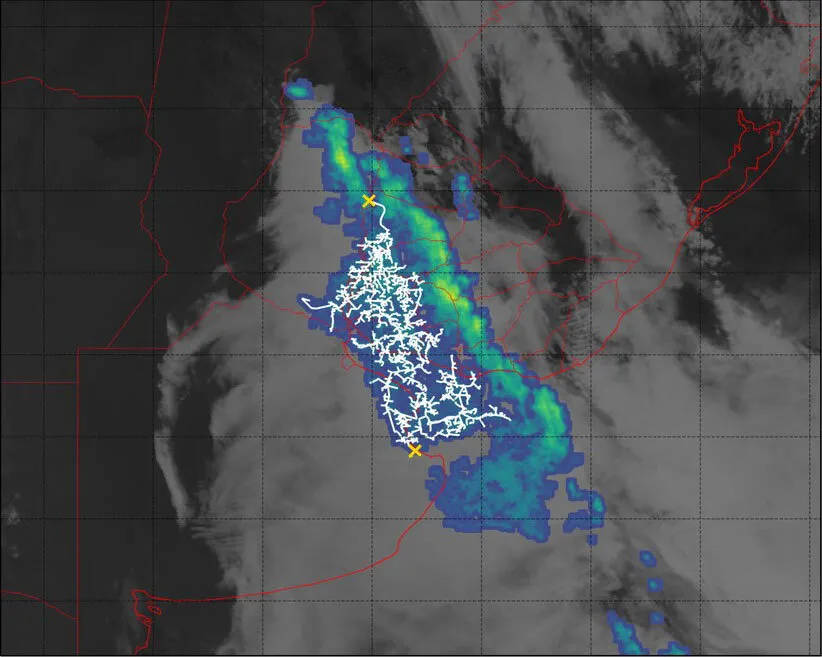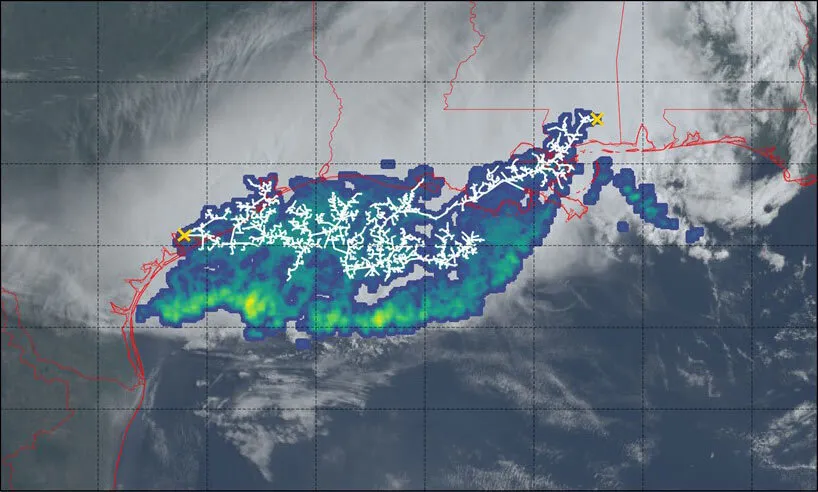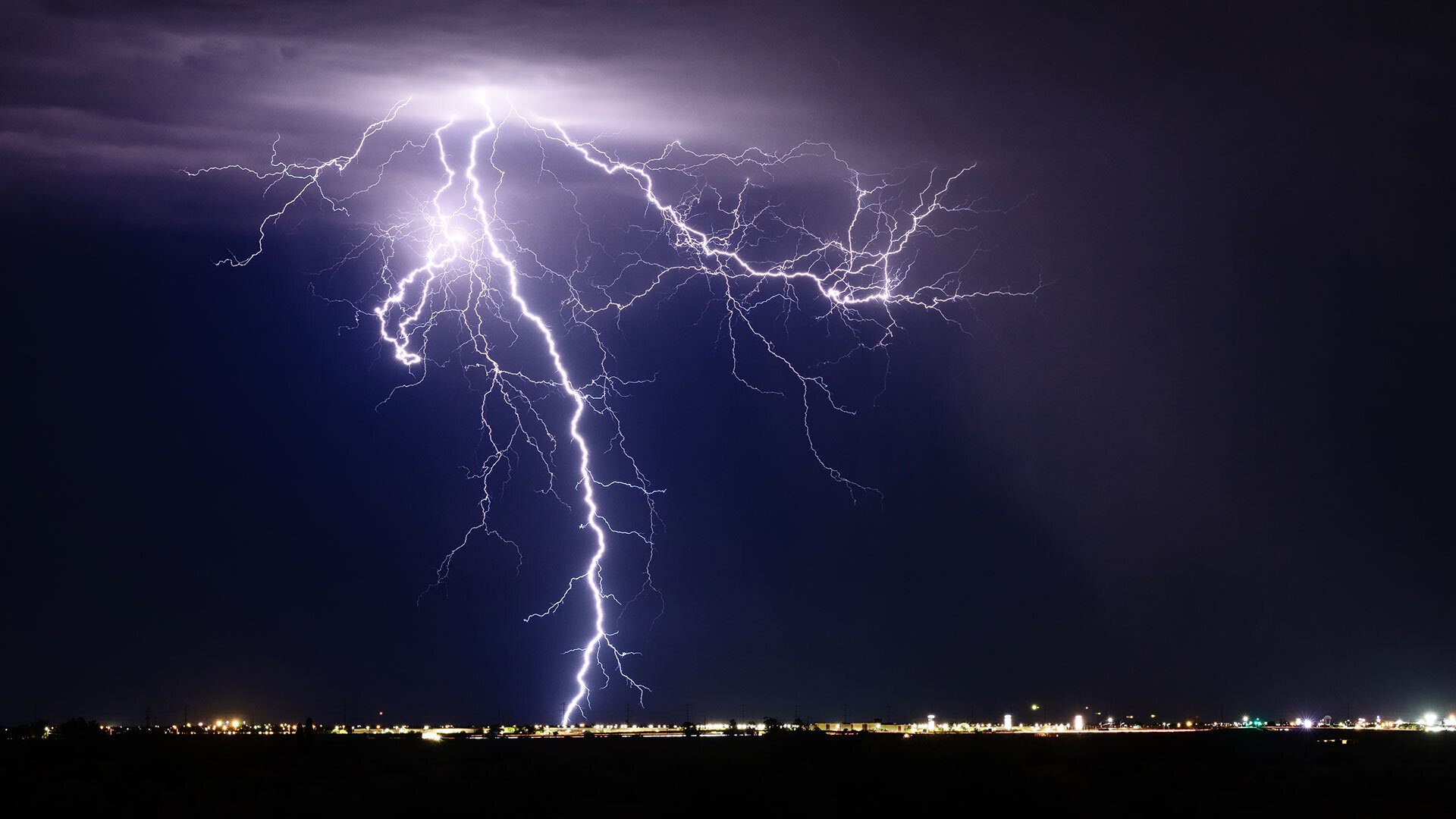- February 02, 2022
- By Maryland Today Staff
The World Meteorological Organization (WMO) on Monday announced two new world records for “megaflashes” of lightning in notorious hot spots in North and South America, and a University of Maryland scientist helped certify the results, published in the Bulletin of the American Meteorological Society:
- The longest single flash, which lit up 477.2 miles, (with a five-mile margin of error) across parts of the American South on April 29, 2020. That’s equivalent to a lightning bolt stretching from College Park to Cleveland.
- The greatest duration for a single lightning flash—17.102 seconds (with a 0.002-second margin of error)—from the flash that developed continuously through a thunderstorm over Uruguay and northern Argentina on June 18, 2020.

“Mother Nature is amazing, and it’s exciting that we have new technology to observe, appreciate and respect it. These new records demonstrate technology advancements in satellite remote sensing, and meteorology and climate, in general,” said Daile Zhang, a postdoctoral associate in the University of Maryland’s Earth System Science Interdisciplinary Center who serves on the WMO’s Committee on Weather and Climate Extremes, which recognized the records and maintains official records of global, hemispheric and regional extremes. “These observations give us the confidence that efforts to launch new satellite sensors paid off.”
The new record for the longest detected megaflash distance exceeds the previous record, from 2018, by 37 miles. The new longest-duration megaflash is 0.37 second longer than the previous record from 2019.
“These are extraordinary records from single lightning-flash events. Environmental extremes are living measurements of the power of nature, as well as scientific progress in being able to make such assessments. It is likely that even greater extremes still exist, and that we will be able to observe them as lightning detection technology improves,” said Randall Cerveny, President’s Professor of geographical sciences at Arizona State University and rapporteur of Weather and Climate Extremes for WMO.

Zhang has served on the WMO committee since March 2021. After getting the initial reports on the new megaflashes, she checked satellite- and ground-based lightning network data associated with these flashes to validate the raw data and verify that the flashes matched well between the different networks, confirming the results were not caused by sensor issues or solar activity, and were not actually groups of lightning flashes.
The new record strikes occurred in hot spots for thunderstorms conducive to extraordinary megaflashes to occur—namely, the Great Plains in North America and the La Plata basin in South America.
“The observation of megaflashes provides reinforcement of lightning safety concerns,” Zhang said. “Long and large flashes do occur. Some of these flashes are called ‘bolt from the blue,’ which originate from a parent thunderstorm a few tens of kilometers—or even more—away and travel to a distance where no thunderstorm is seen overhead. These flashes are dangerous and could be life-threatening.”
This article is based on a release from the World Meteorological Association.
